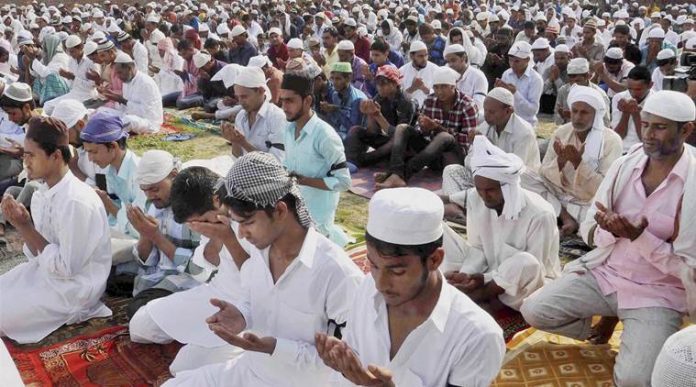SUNNI-SHIA.
The oldest, and most radical, division in Islam began early in its history when members of the Islamic community had differences concerning who should lead the Muslim community after the death of the prophet Muhammad in 732 AD. The majority favored an open election to determine a Caliph (successor). A minority insisted the successor be a blood relative of the prophet. Hopes for a peaceful solution to this crisis were dashed when the sixth Sunni Caliph, in an attempt to stamp out the Shia ‘heresy,’ ordered the murder of the prophet’s grandson, Hussein. The Shia community was outraged and Hussein became the first Shia martyr. The division between the two groups remains to this day.
SHIA.
Among the Shia minority divisions also occurred. Because of their belief that the leader of the Muslim community must be a blood relative of the prophet, disputes arose when two sons of an Imam (the title given to the Shia leader) both claimed to be the rightful successor. These disputes caused the Shia sect to further divide into three groups: Zaids, Ismai’ilis and Ithna Asharis
An important feature of their distinctiveness is that all three Shia groups developed their own distinctive legal schools. The most well known is the Figh-a-Jafari school belonging to the Ithna Ashari Shias.
SUNNI.
The differences within the Sunni branch of Islam are primarily based upon different ways that fiqh (religio-legal precepts) are developed and practiced. After the death of the prophet the Islamic community began to develop a body of law known as sharia. This law was based upon the Quran (the prophet’s revelations) and the Sunnah (the worlds and deeds of the prophet). For legal solutions that could not be found in these sources the prophet had sanctioned the use of ijtihad (independent reasoning).
Within 150 years two distinct sharia schools were recognized: the Hanafi school founded by Imam Abu Hanifa in Kufa and the Malik school founded by Imam Malik in Madina. In the following century two other major schools emerged, the Shafei school of Imam Idris al-Shafei in Egypt and the Hanbali school of Imam Ahanad ibn Hanbal in Baghdad. In time the vast majority of Sunni Muslims accepted one or another of the four schools as final and binding. By the 15th century it was believed that all important legal questions had been addressed. “The gates of ijtihad were closed,” that is, independent reasoning was no longer permitted in Islamic jurisprudence and Muslims were to conform to the rulings of past authorities.
OTHERS.
In reaction to the growing emphasis on jurisprudence the Sufi movement was born.Moving away from a focus on legal codes they stressed an interior ‘heart-felt’ relationship with God. The Sufis also saw a necessity to be guided by a Sheik (spiritual leader) and their religious orders began to spring up all over the Islamic world. In addition to the Sufis add a mixture of fringe fundamentalist and/or radical groups and a myriad of splinter sects like the Alawites and the Ahmadiyyas and one can begin to glimpse the diverse nature of Islam today.
The Indian Connection
While Islam was introduced into the Indian sub-continent in the 8th century it was unable to establish a firm hold among the Hindu population. It wasn’t until the 11th century when Sufi missionaries, eager to share their faith, settled in India, that Islam became part of the religious landscape. The Sufis with their emphasis on spirituality instead of doctrinal conformity were open to the possibility of new truths. While bearing the witness of Islam they were also open to a wide variety of spiritual expressions, which they believed could be found anywhere, even in other religious traditions. As a result Islam found acceptance in spiritually rich India and there developed a spirit of cooperation between the Muslim (i.e. Sufi) and Hindu communities in India. Muslims in India would often visit Hindu holy sites and observe Hindu festivals. Likewise, many Hindus participated in Muslim celebrations. By the time the British East India Trading Company began to regulate the Indian spice trade in 1601 Islam (and Islam/Hindu cooperation) had been firmly planted in Indian soil for close to 400 years. The East India Company, taking advantage of a disorganized and chaotic situation took control of spice trade and commerce in general. Their greed and cruelty forced the Indian population to revolt in 1857. The muslims not only wanted freedom from the British, they also wanted restoration of islamic rule on India (only the magnitude of islamic rule varied). In the aftermath of the unsuccessful revolt the British were forced to exclude the muslim population from public and government offices. This was also not too difficult as the muslim population abhorred modern education and preferred religious studies over sciences.
By this time (1857) the Muslim community itself was engaged in bitter disputes about how Islam should be practiced in India. The more traditional Muslims wanted Islam to be completely separated from Hindu and especially British interference. This puritan strand of Islam later became known as, Deobandi. Other Muslims, deeply influenced by the Sufi tradition in India, insisted on maintaining cooperation with Hindus and worked to change the British rule by working within the established governmental system. This innovative strand of Islam later became known as Bid’ati (practitioners of innovation). The “reformist” Deobandi scholars were against all forms of Bidat (innovation) and did their best to destroy every movement by condemning them as Kafirs/Murtad.
![]()
- KARBALA – THE BATTLE THAT DIVIDED THE MUSLIM WORLD - August 9, 2022
- TRAITOR: Shabbir Ahmad Usmani L’IDÉE DU PAKISTAN - August 1, 2022
- KNOW YOUR MOMIN - July 18, 2022

